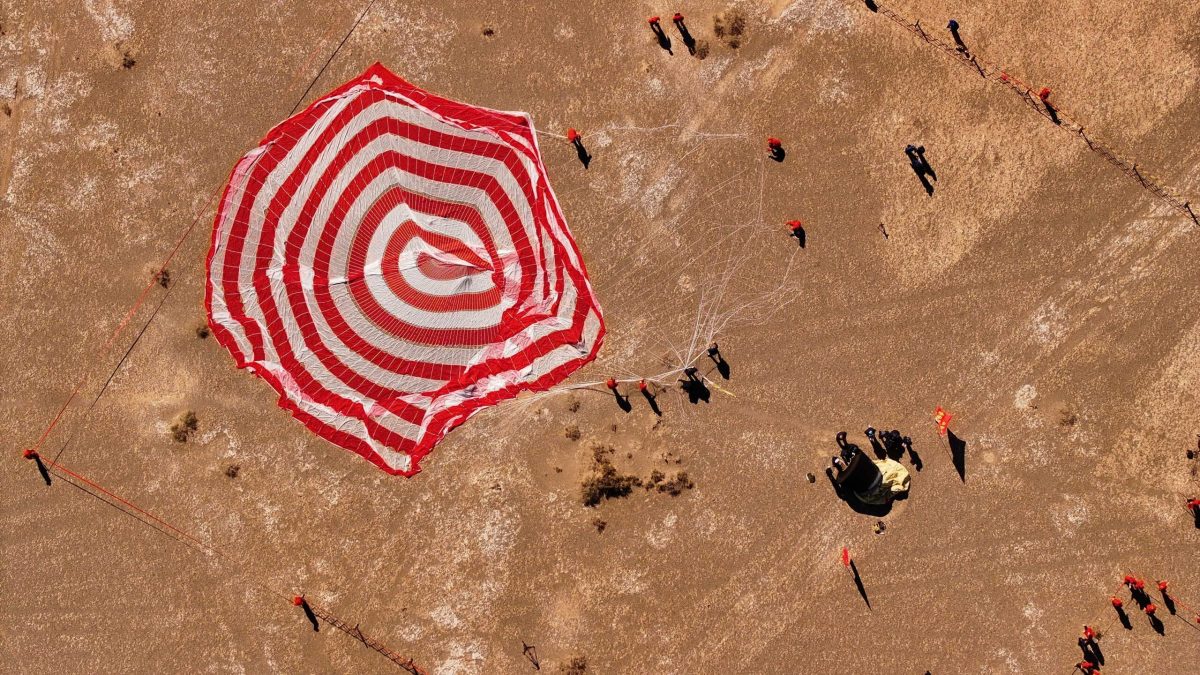HELSINKI — China’s first retrievable and reusable satellite returned to Earth late Thursday following two weeks of experiments in low Earth orbit.
The Shijian-19 satellite touched down at 10:39 p.m. Eastern Oct. 10 (0239 UTC, Oct. 11) at the Dongfeng landing site near Jiuquan Satellite Launch Center in the Gobi Desert. Recovery personnel opened the spacecraft to retrieve its payloads.
Shijian-19 launched on a Long March 2D rocket Sept. 27 from Jiuquan. It carried plant and microbial breeding payloads, as well as autonomous, controllable, and new technology verification test payloads, space science experiment payloads, and cultural items, according to a China National Space Administration (CNSA) statement.
The mission also “verified the technical indicators of the new generation of high-performance reusable returning space test platform and achieved various expected test results,” CNSA stated.
The mission also carries payloads from five countries, including Thailand and Pakistan, according to a post-launch CNSA statement.
China has a strong interest in space breeding of crops. Exposure to space conditions is thought to accelerate genetic mutations that may enhance crop resilience and productivity. With relatively little arable land, China aims to increase crop yields and agricultural output.
Officials with the China Academy of Space Technology (CAST), the spacecraft’s maker, had presented the reusable, retrievable Shijian satellite series back in 2018. CAST initially planned around 15 missions for the period 2019-2025. Shijian-19 was, however, the first such mission.
The Shijian-19 satellite, weighing approximately 3,500 kilograms, has different configurations for varying mission requirements. This mission used a “short-term” version, designed for missions lasting about two weeks. A long-term configuration, equipped with solar arrays on its propulsion and power module, is capable of remaining in orbit longer, supporting extended experiments. The recoverable portion can carry between 500 to 600 kilograms of payload.
The Shijian-19 mission is part of China’s broader space program, which includes ambitious plans for deep space exploration, a range of experiments aboard the Tiangong space station, and advancements in reusable space technologies.
The new Shijian satellite builds on China’s earlier Fanhui Shi Weixing (“recoverable satellite”) series, first launched in the 1970s. Those satellites notably used impregnated oak for the heat shield for the reentry portion of the spacecraft.
Chinese launch activityThe Shijian-19 launch was China’s 46th orbital mission of 2024. The country has since then launched a new high orbit internet satellite (Oct. 10) for undisclosed purposes. Launch of the crewed Shenzhou-19 mission is currently expected in late October, though no firm date has been provided. First indication of imminent launch will be the roll out of the mission’s Long March 2F launch vehicle at Jiuquan in the days before launch.
A second batch of China’s Qianfan/Thousand Sails megaconstellation satellites could take place as soon as next week. The mission will be closely watched for a number of reasons. These include potential debris from the Long March 6A, as created by the first Qianfan satellite launch, and the apparent brightness of the satellites, which could pose issues for astronomy.
CASC said late September it plans to conduct more than 20 launches before the end of the year.
